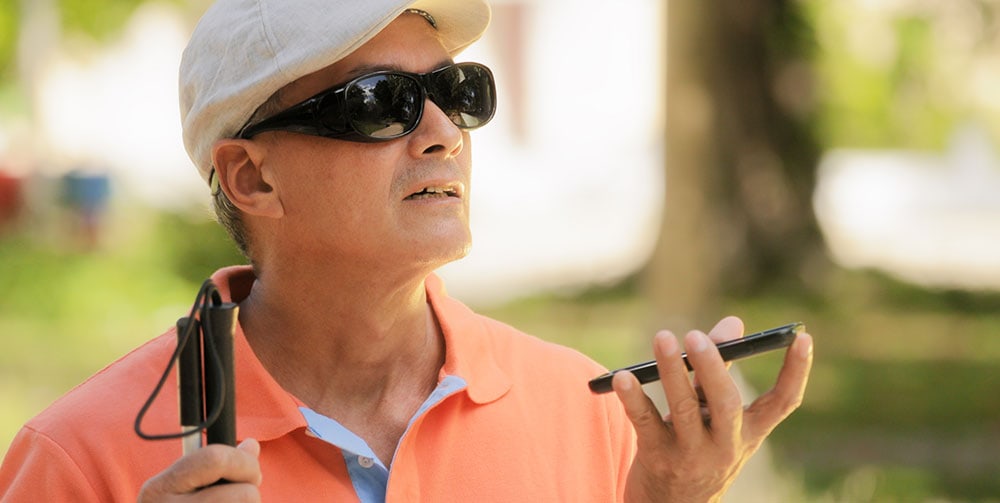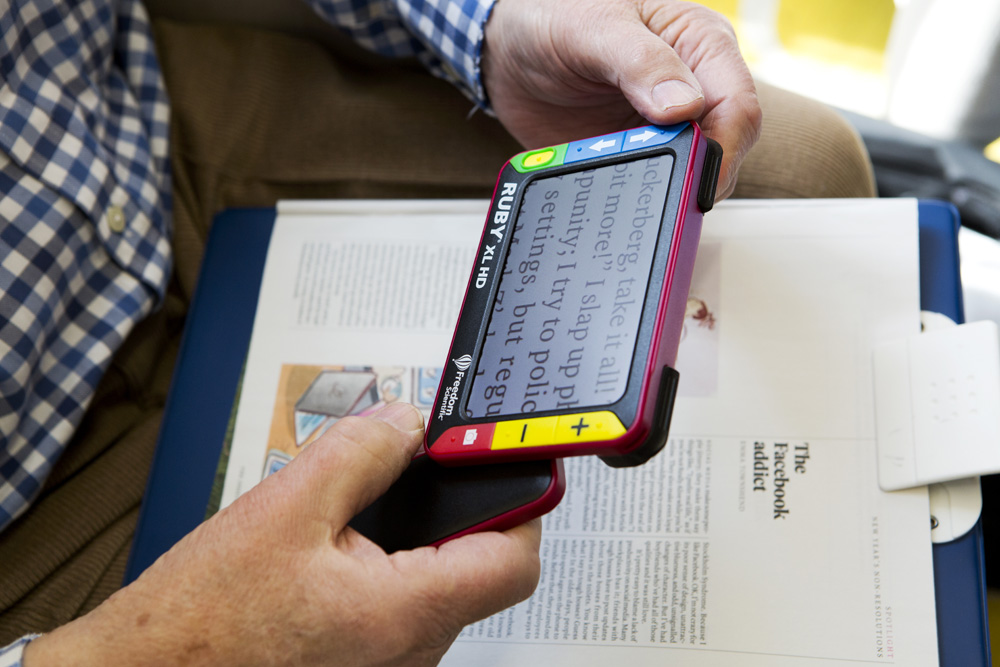Enhancing Lives With Advanced Assistive Instruments for the Blind
The integration of advanced assistive devices for the blind is transforming exactly how people experience their environments and connect with their areas. What does this evolution suggest for the future of assistive technology and its role in empowering people?
Introduction of Assistive Devices
Assistive tools for the blind include a varied variety of modern technologies and tools created to improve independence and improve the top quality of life for individuals with aesthetic impairments. These devices cater to different needs, from navigating and movement to communication and day-to-day task monitoring.
One of the primary classifications of assistive devices includes wheelchair aids, such as white walking canes and guide pets, which help individuals navigate their surroundings safely. Electronic travel aids, equipped with sensors and audio feedback, additionally play a significant function in flexibility enhancement.
Additionally, tools that aid with daily living tasks, such as flexible cooking area devices, Braille labels, and speaking watches, equip individuals to execute tasks individually. Interaction help, consisting of display visitors and Braille display screens, help with access to info and enable individuals to engage properly with the digital globe.
In addition, low-tech solutions like multiplying glasses and large-print materials remain important for numerous users. Collectively, these assistive devices offer not only as useful tools yet additionally as vital enablers of freedom, cultivating greater engagement in a globe that typically focuses on sighted experiences. Their integration into day-to-day life is vital for advertising inclusivity and boosting overall wellness for those with aesthetic problems.
Ingenious Technologies in Usage
Technology in technology has significantly transformed the landscape of tools readily available for individuals with visual disabilities. Among the most notable improvements are smart glasses incorporated with enhanced truth, which give real-time navigating aid and things recognition. These tools leverage advanced video cameras and artificial intelligence to provide auditory hints, boosting the customer's spatial understanding and autonomy.
Additionally, mobile applications have become powerful resources, making it possible for customers to recognize money, checked out text out loud, and navigate strange settings via spoken instructions. Devices such as Braille displays and refreshable Braille devices remain to evolve, providing seamless connectivity with smartphones and computer systems, thereby boosting communication and accessibility to details.
Wearable modern technology, including smartwatches outfitted with voice-activated functions, even more encourages users by assisting in quick accessibility to alerts and alerts without needing aesthetic interaction. Responsive maps and 3D printing are additionally obtaining grip, supplying substantial depictions of areas that help in orientation and mobility training.
Jointly, these ingenious innovations not just boost the lives of visually damaged people however additionally foster better independence, inclusivity, and involvement with the broader neighborhood, thereby reshaping assumptions of availability. (AI-powered visual aids)
Individual Stories of Empowerment
Empowerment commonly arises from individual experiences that highlight the transformative influence of innovation on people with aesthetic problems. Take, for example, the story of Sarah, a young musician that reclaimed her passion for paint through making use of a clever cane equipped with challenge detection. This tool not only promoted her flexibility but instilled a newfound confidence, allowing her to browse public spaces separately and pursue her creative endeavors.

These stories underscore the profound effects that progressed assistive tools can have on life. By allowing people to get over barriers, innovation fosters a sense of freedom and self-worth. Such empowerment stories function as a testament to the capacity of innovation, illustrating just how the right devices can substantially boost quality of life and open doors to brand-new opportunities for those with aesthetic impairments.
Advantages of Advanced Solutions
Just how can advanced solutions essentially enhance the lives of individuals with visual impairments? The integration of cutting-edge modern technology right into assistive tools significantly changes daily experiences for those influenced by vision loss. These innovative remedies use extraordinary autonomy, making it possible for individuals to navigate their atmospheres with confidence. Instruments such as clever canes equipped with sensors, navigating applications, and wearable innovation are made to supply real-time feedback, improving spatial understanding and decreasing the risks connected with wheelchair.
In addition, advanced assistive innovations cultivate social inclusion by assisting in communication and communication. Voice-activated tools and apps permit individuals to gain access to info and engage with their surroundings separately, damaging obstacles that previously prevented their participation in educational, professional, and social setups.
On top of that, the customization and adaptability of these solutions satisfy the varied demands of users, consequently enhancing see this their overall lifestyle. Enhanced performance, such as things recognition and text-to-speech capacities, encourages people with aesthetic click now disabilities to perform tasks that they may have once found challenging. Ultimately, progressed assistive modern technologies not just enhance freedom and safety and security but also advertise self-respect and self-worth, allowing users to lead meeting lives.
Future Fads in Assistive Technology
As innovation proceeds to develop, the landscape of assistive gadgets for the blind is poised for remarkable developments that will even more improve accessibility and freedom. Arising patterns in assistive innovation suggest a shift toward raised combination of expert system (AI) and maker knowing, enabling gadgets to adapt to individual customer requires in real-time. These developments are expected to promote more intuitive navigating systems that can identify barriers and provide audio responses, substantially enhancing outdoor wheelchair.
Additionally, the development of wearable technology, such as smart glasses equipped with enhanced reality, will certainly enable users to obtain contextual details regarding their surroundings, thus enriching their spatial awareness. Additionally, advancements in haptic innovation promise to develop responsive feedback tools, allowing individuals to regard info via touch, enhancing understanding and interaction with their setting.
Telecommunication advances are likewise leading the way for remote help services, where qualified specialists can provide assistance via video clip phone calls, guaranteeing support is readily available. As these patterns unfold, the future of assistive tools learn this here now for the blind will undoubtedly promote better freedom, equipping individuals to browse their world with self-confidence and convenience.

Final Thought
The assimilation of sophisticated assistive gadgets for the blind stands for a significant improvement in cultivating self-reliance and improving lifestyle. By utilizing ingenious technologies, these tools empower customers to browse their atmospheres with higher self-confidence and autonomy. As the area continues to evolve, ongoing study and development will likely generate a lot more sophisticated remedies, additionally transforming the lived experiences of people with visual disabilities and advertising a higher feeling of incorporation within culture.
The assimilation of innovative assistive gadgets for the blind is transforming exactly how people experience their surroundings and communicate with their neighborhoods. The combination of cutting-edge innovation right into assistive gadgets significantly changes day-to-day experiences for those impacted by vision loss.As modern technology proceeds to progress, the landscape of assistive devices for the blind is poised for impressive developments that will certainly better boost access and freedom. Arising fads in assistive modern technology indicate a change toward increased combination of man-made knowledge (AI) and maker learning, enabling gadgets to adjust to private customer needs in real-time.The assimilation of advanced assistive devices for the blind represents a substantial innovation in fostering self-reliance and improving high quality of life.
 Alicia Silverstone Then & Now!
Alicia Silverstone Then & Now! Shane West Then & Now!
Shane West Then & Now! Barbi Benton Then & Now!
Barbi Benton Then & Now! Raquel Welch Then & Now!
Raquel Welch Then & Now! Sarah Michelle Gellar Then & Now!
Sarah Michelle Gellar Then & Now!